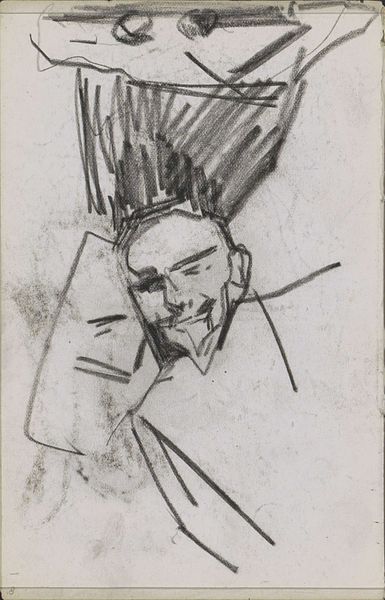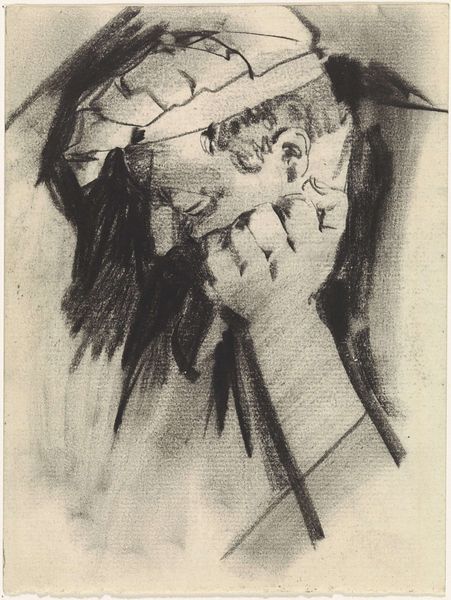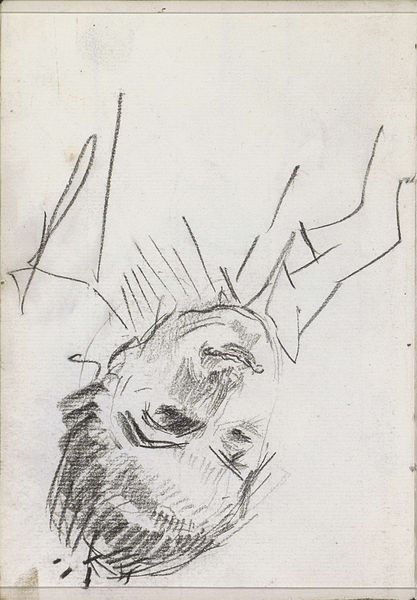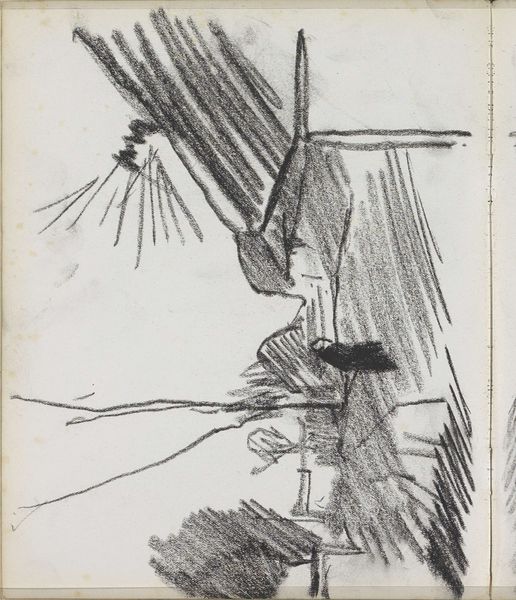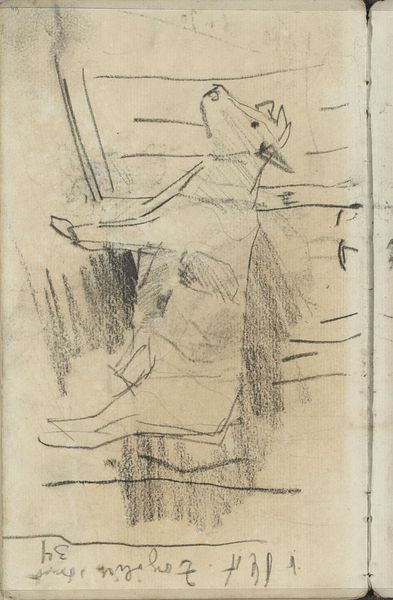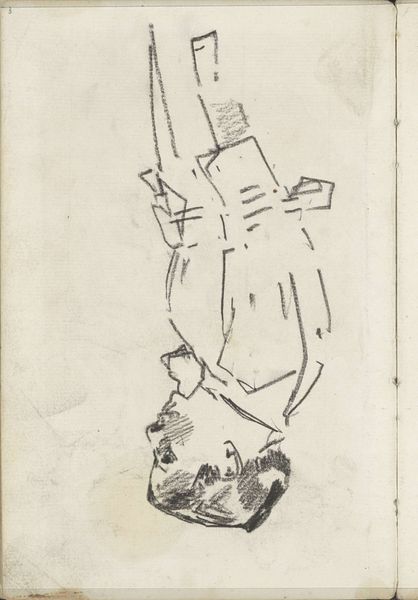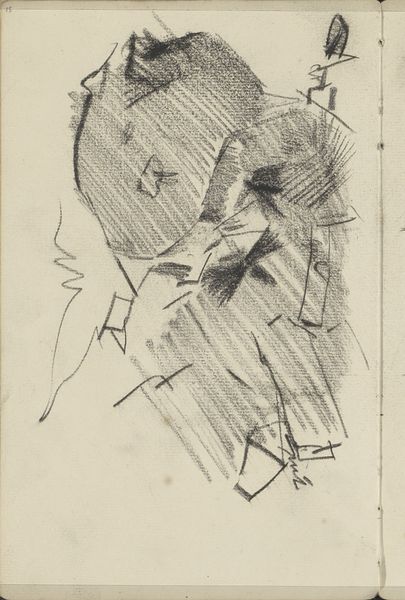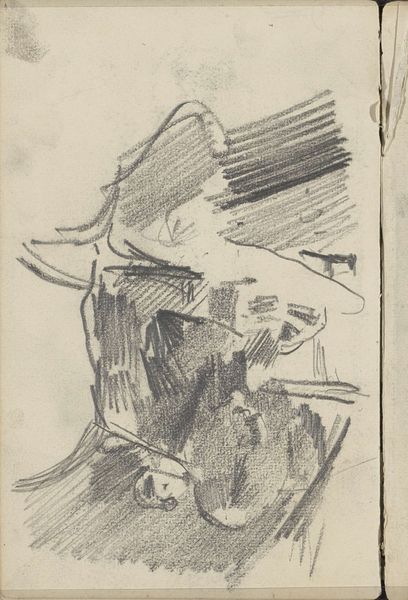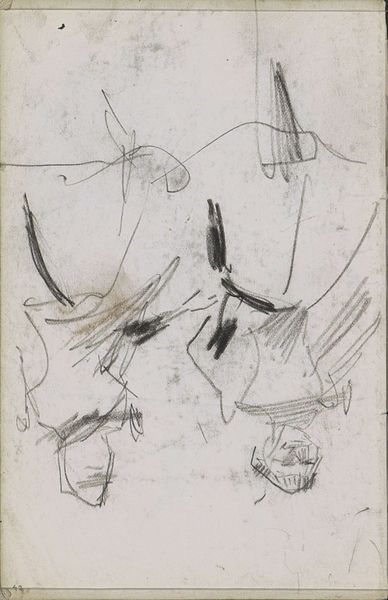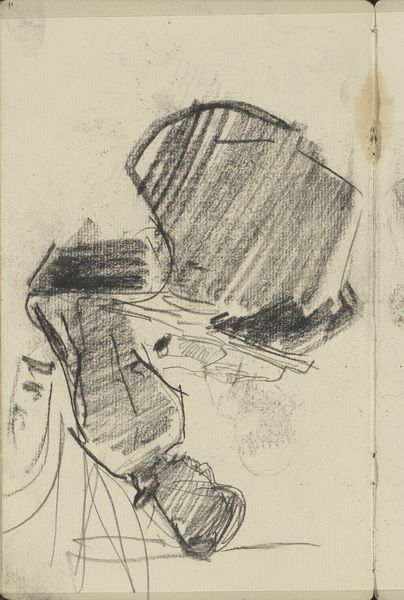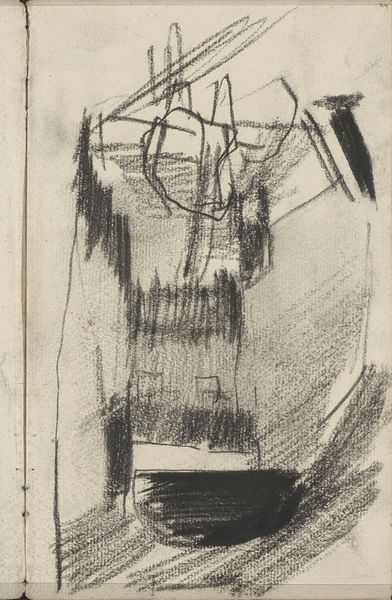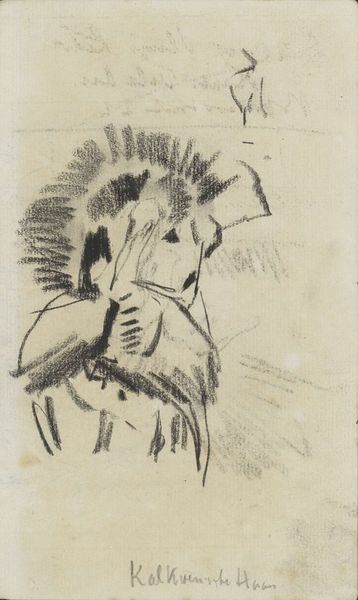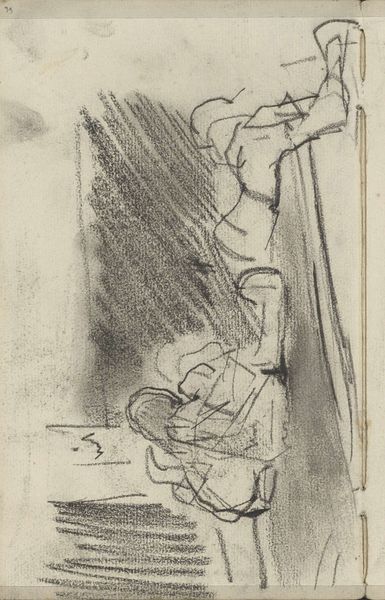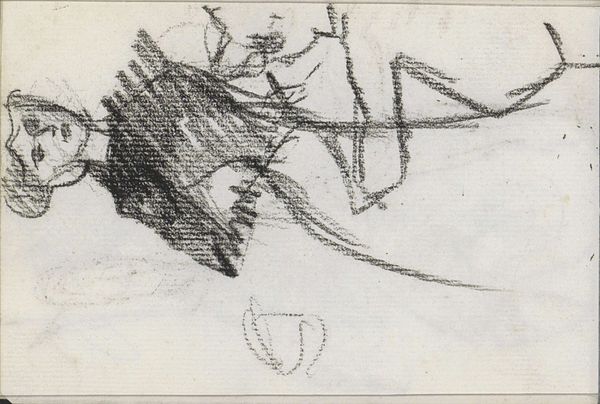
Copyright: Rijks Museum: Open Domain
Curator: This evocative drawing, simply titled "Vrouwenhoofd, in profiel," or "Head of a Woman, in Profile," is attributed to Isaac Israels and likely dates between 1875 and 1934. What strikes you immediately? Editor: It's stark, almost unsettling. The rough charcoal gives the subject a weight and density that contradicts the medium's inherent lightness. The heavy shading obscures her features, leaving us with an impression of melancholy or perhaps quiet resolve. Curator: Indeed. Consider the social context. Israels was known for his depictions of everyday life, often focusing on working-class women. This drawing, with its loose strokes and raw materiality, might be a study from his broader explorations of labor and representation. How does this method challenge formal portraiture? Editor: It throws tradition aside. We’re missing the smooth lines, the idealized beauty. The expressiveness comes not from meticulous detail, but from the suggestive power of the charcoal itself, creating an atmosphere. Observe how light is manipulated to suggest the planes of the face. It's impressionistic in its pursuit of fleeting expression. Curator: I wonder, though, about access to materials. Charcoal and paper were relatively inexpensive and widely available, aligning with Israels's broader social project of documenting the lives of ordinary people. Was he interested in making art more accessible to those often overlooked? Editor: An interesting point. Regardless of the cost, there is definite power in how the material transforms into form. The immediacy of charcoal captures a raw emotional state in such few lines. There is structure there too, consider the positioning and framing which lend stability and balance. Curator: Perhaps the speed and simplicity of the medium also aligned with Israels's artistic vision—allowing him to capture ephemeral moments of modern life in a rapidly changing world. It raises important questions about the role of artistic labor itself, and the democratizing potential of artistic creation. Editor: I’m left with an urge to examine the face more, find my own emotion mirrored within those simple, but powerful lines. Curator: And I am reminded of how artistic material helps democratize labor, and challenges the role and definition of the working classes.
Comments
No comments
Be the first to comment and join the conversation on the ultimate creative platform.
